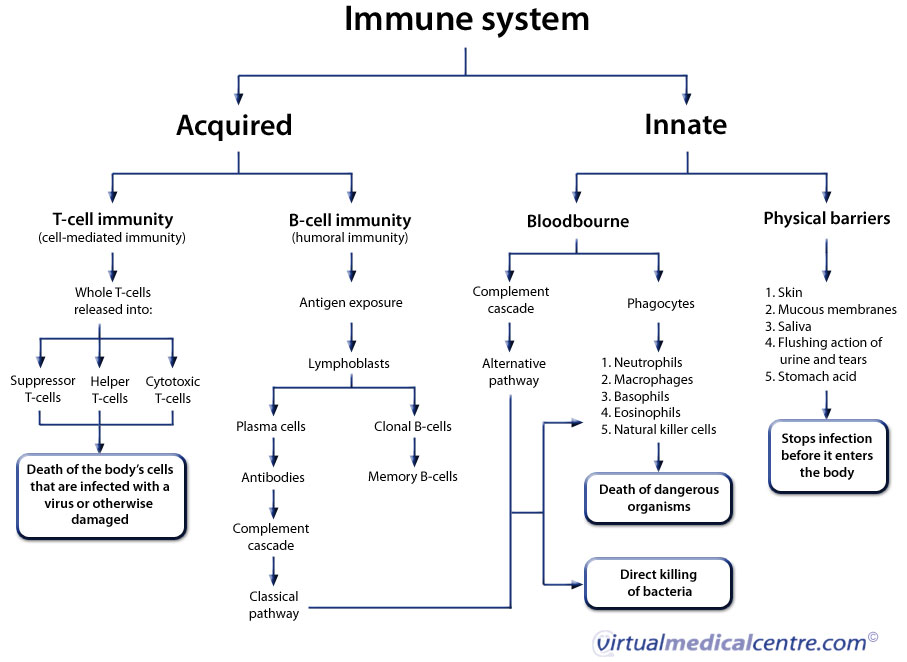The Question - QUIZ
An important defense against disease in vertebrate animals is the ability to eliminate, inactivate, or destroy foreign substances and organisms. Explain how the immune system achieves all of the following.- Provides an immediate nonspecific immune response
- Activates T and B cells in response to an infection
- Responds to a later exposure to the same infectious agent
- Distinguishes self from nonself

2) Our immune system activates B-cell immunity and T-cell immunity to fight off infections. Our body produces microphages to eat off antigens then it presents the shape through a chemical MHC2 to the T helper cell then the T helper cell can activate the B cell which is a humoral immunity cell that secretes antibodies to fight off the bacteria and also creates more microphages. On the other hand, the T helper cell also activates a killer T cell that is cell-mediated, meaning that these cells attack and kill the cells already in the body that are infected.
3) When antigens attack one's body, the naive B cells starts to clone itself for the specific antigen that is attacking the body. They then become plasma cells and many others become memory B cells which are stored for years in one's body to allow quick response when the same type of virus or bacteria attacks again. The paratope will recognize the same shape of the bacteria and thus killing it faster. The memory T cells are vaccination cells that gives the body a response the first time then allow the body to kill it faster when the bacteria actually comes. It can fight cancer and other invader cells.


4) The immune system distinguishes itself from foreign invaders by looking at the shapes of the epitopes on top of the antibodies and how they fight off different antigens. These shapes can be easily distinguished and if the shape of the antibody matches with shape of the epitopes of the antigen, then it will bind with it and activate the system. However, it is possible that the immune system identifies something that is helpful to the body as harmful for example a heart implant.

No comments:
Post a Comment